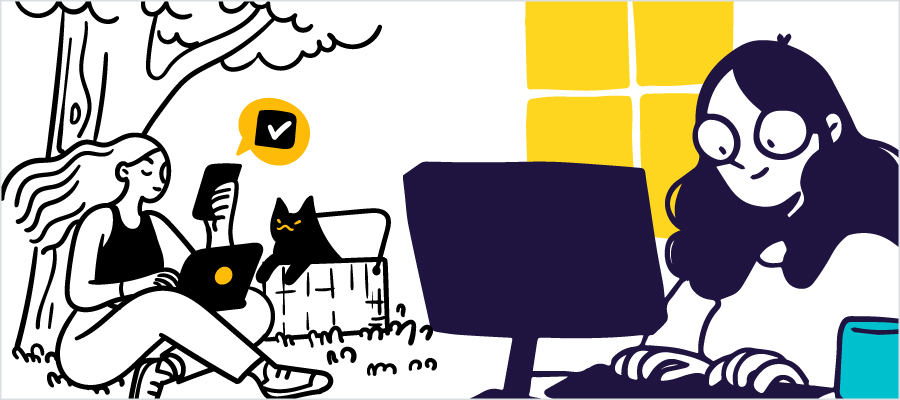A message from Lois Brooks, vice provost for information technology and chief information officer:
The past few years have shown us that remote and hybrid work is here to stay for IT professionals in higher education. And while we’ve had enough time to smooth out the rough edges here at UW–Madison, the mixed modalities of our modern workplace are still very new when you consider the 175 years this university has been operating.
So, though we’ve reached a comfortable state by and large, it’s still useful to keep asking what more we could do to make hybrid work a great experience.
We had a good discussion about this in early January during my regular office hours. I’m often blown away by the great ideas that our community brings to those unscripted discussions, and this conversation was no exception. In a hybrid workplace, people who are on-site can have a very different work experience from those who are remote, and the ideas our community generated will work equally well for in-person and virtual work. Here are a few of the ideas that emerged from that conversation:
Get creative with meetings
While nothing can fully replicate spontaneous hallway conversations for remote employees, there are ways to stimulate new thinking and connections in a remote setting.
Try taking meetings on the move with walking meetings to get your blood flowing. Or switch up your surroundings periodically by working in different spots, either on campus or whatever is accessible from where you work.
Some folks have had success with virtual “side by side” meetings, where 2 or more people get on a call to work on a shared project at the same time, allowing for easy communication when you need to ask a question, brainstorm an idea, or get help when you’re stuck on something.
Other groups have experimented with rotating meeting facilitation responsibilities. Switching up who runs the meeting can be a great way to shake our new ideas, generate new enthusiasm in your regular meetings, and learn new things about your coworkers.
Emphasize psychological safety
Work to create an environment where people feel secure sharing ideas and asking questions without fear of negative consequences. It takes trust and comfort to spark the kind of innovation we need to stay at the top of our game here at UW. And this doesn’t just apply to supervisors—everyone has a role to play in creating a culture where we actively prioritize each other’s well-being.
Here are some ideas from the chat for ways to help create that kind of environment:
- Recognizing and praising good work
- Avoiding perfectionism
- Saying “yes and” to new ideas and encouraging team members to try new things
- Emphasizing what we learned from mistakes rather than dwelling on what went wrong, whose fault it was, or what we should have done instead
- Tailoring how and when you give feedback to the needs of the person you’re working with
When team members have psychological safety, they feel more engaged and motivated and like they are an important part of the team’s success. Teams with psychological safety work better together, make smarter decisions, and are more open to continuous learning and improvement.
These ideas aren’t prescriptive, and they aren’t all-encompassing. What works for some folks may not work for others. But I was encouraged by the engagement from everyone on this topic. It speaks to our shared commitment to making this a safe, productive space for all of us to be ourselves, do great work, and enjoy doing it.
— Lois
Related links
- “What is psychological safety?” – Harvard Business Review
- “4 ways to design employee experience in the remote work era” – MIT Sloan
- “7 fun ideas to make your team meetings more engaging” — Harvard Business Review
